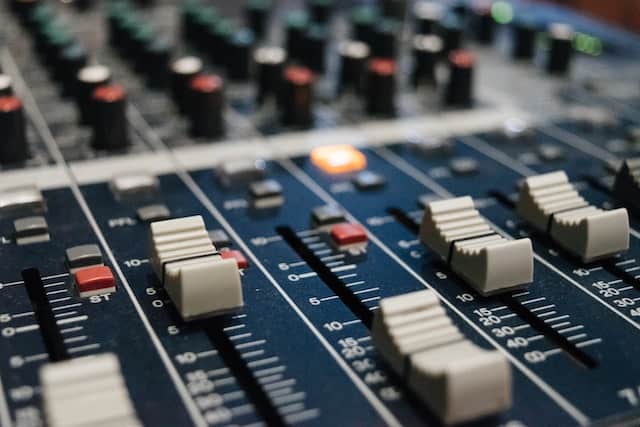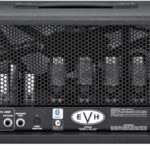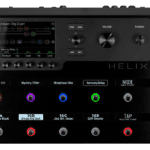When playing live gigs many players prefer the simplest setups around.
Especially if you are touring, or have a few gigs lined up, carrying heavy gear might become a tedious and physical task.
In their quest to reduce the rig to its minimal expression, many players moved towards multi-effects pedalboards which hold everything they need in a small form factor.
But the ultimate minimalist flex would be just to show up with a guitar and a cable.
So, can you plug a guitar directly into a mixer?
You can plug a guitar directly into a mixer, however, it might sound harsh without any kind of cab or speaker simulation. Also, running a long instrument cable to a mixer might allow a lot of noise and interference to degrade your signal. DI boxes are used to prevent this.
In this article, I will tell you all you need to know about how a guitar signal straight into a mixer would interact with it, and if it’s something dangerous for the gear or completely fine.
After leaving this page you will know exactly what are your options when playing live, and what is the best workaround to plug your guitar into the house mixer.
Are you ready to get started?
Let’s go!
Can you damage a mixer by plugging a guitar straight in?
Rest assured it’s impossible to damage a mixer by plugging your guitar straight into it.
The only issue is that your signal might sound weak or with a lot of interference.
Mixers are designed to take an amplified signal and the instrument level one from your guitar is likely to not make it through the cut.
Risks of damaging gear usually come the other way around.
This is, when you plug an amplified signal into something that expects a lower level signal, or when you go into an amplifier with an already amplified signal.
The opposite of what I described will happen if you go with your guitar into a mixer.
And finally, there’s no risk of blowing up speakers or monitors with an instrument signal that’s actually even too low to drive them.
Don’t worry about these myths that you could have read online.
Will a guitar sound good if plugged straight into a mixer?
Your guitar is very likely to sound like crap if you plug it directly into a mixer.
Even if you are using a multi-fx pedalboard, there will be issues with your sound if you don’t incorporate an amp and cab simulation.
Guitar tone as we know it is shaped by amplifiers and speaker cabinets which act like a filter that takes out all the harsh top end the instrument produces.
If you skip this part from your rig, things will likely sound awful.
Also, if the mixer is not really close to you and you have to run a long instrument cable to it, a lot of noise and interference will get into your signal because of how guitar signals work.
For running a long connection like the one I’m describing here you will need to use a direct box in between your instrument and the mixer.
A direct box is a small device that transforms your signal from unbalanced (susceptible to picking up noise) into a balanced one (a stronger clearer alternative that doesn’t pick up too much interference).
Are there any mixers that work best with guitars?
Although any mixer will have a way of taking in a guitar signal, there are a lot of modern units with “instrument level” inputs that are designed to take guitars and bass guitars just fine.
These inputs are prepared to amplify weaker inputs to the working level of the mixer.
However, this doesn’t mean that any of the issues I mentioned before would be omitted.
An instrument-level input only assures you that the mixer will be able to work with the kind of signal your guitar produces.
For crafting a decent tone you will require some sort of cabinet simulation or impulse response.
Finally, if you run a long instrument cable to the interface you will be having the same interference issues discussed above.
What is the difference between line level and instrument level?
The main difference between line level and instrument level is their strength.
Instrument level signals are weaker than line level and require that a preamp pushes them upwards to line level to be then served to an amplifier that gets it to speaker level, or served to any sort of processor, or DAW.
Line level signals are the standard at which audio gear works for different purposes. These signals are what you will find after a preamp and before an amp.
So, to sum it up: Instrument level signals need to be brought up to line level with a preamp, and line level signals need to be boosted to speaker level with an amp.
It might be confusing at first, but once you pick it up things clear up.
What is the most usual setup for plugging a guitar into a mixer?
Nowadays, with the advent of multi-effect pedalboards such as the Helix, the Headrush, or the Quad Cortex, it is quite common to go from their XLR outputs (balanced) into a mixer.
And this works just fine because you are likely incorporating cab simulations or impulse responses at the processing stage done by these units.
Your guitar will end up sounding as good or better than if you were to mic up an amp.
For recording, it’s common to use a DI box and plug your guitar straight into the soundboard or mixer, since it’s likely to be rerouted and/or reamped later.
Going straight with a guitar to a PA system is not something a lot of players do for the reasons discussed in this article.
However, doing so is rather common for bass players since basses sound quite good without the need for any speaker simulation, and don’t create any harsh top end to be dealt with.

Hello there, my name is Ramiro and I’ve been playing guitar for almost 20 years. I’m obsessed with everything gear-related and I thought it might be worth sharing it. From guitars, pedals, amps, and synths to studio gear and production tips, I hope you find what I post here useful, and I’ll try my best to keep it entertaining also.





